There's nothing quite like the thrill of racing across the golden sand dunes in your custom-built dune buggy. The wind in your hair, the roar of the engine, and the endless expanse of desert ahead – it's pure freedom. But with that freedom comes responsibility, and one of the most important responsibilities is making sure you're properly insured.
If you've invested thousands of dollars into building or buying your dream dune buggy, the last thing you want is to lose it all due to an accident, theft, or damage. Yet many off-road enthusiasts either skip insurance entirely or don't fully understand what their policy actually covers. That's where this comprehensive guide comes in.
In this article, we'll break down everything you need to know about dune buggy insurance– from what it covers and how much it costs, to legal requirements and insider tips for getting the best policy for your needs. Whether you're a first-time buyer or a seasoned desert warrior, this guide will help you make informed decisions about protecting your off-road investment.
Table of Contents
What Is Dune Buggy Insurance?
Dune buggy insurance is a specialized type of recreational vehicle insurance designed specifically for off-road vehicles used primarily on sand dunes, desert terrain, and other non-paved surfaces. Unlike standard auto insurance, which is tailored for street-legal vehicles driven on public roads, dune buggy insurance addresses the unique risks and circumstances associated with off-road recreation.
Key Distinction
Standard auto insurance policies typically exclude coverage for recreational off-road use. If you attempt to file a claim for dune buggy damage under your regular car insurance, you'll likely be denied. This is why specialized dune buggy insurance is essential.
What Qualifies as a Dune Buggy?
Before diving deeper into insurance specifics, it's helpful to understand what insurers actually classify as a "dune buggy." Generally, this category includes:
- Sand rails – Lightweight, tube-frame vehicles designed specifically for sand dunes
- Traditional dune buggies – Often built on Volkswagen Beetle chassis
- Custom-built off-road vehicles – Homemade or kit-built recreational vehicles
- UTVs (Utility Task Vehicles) – Side-by-sides used for recreation
- Modified ATVs and quads – Though these may have separate insurance categories
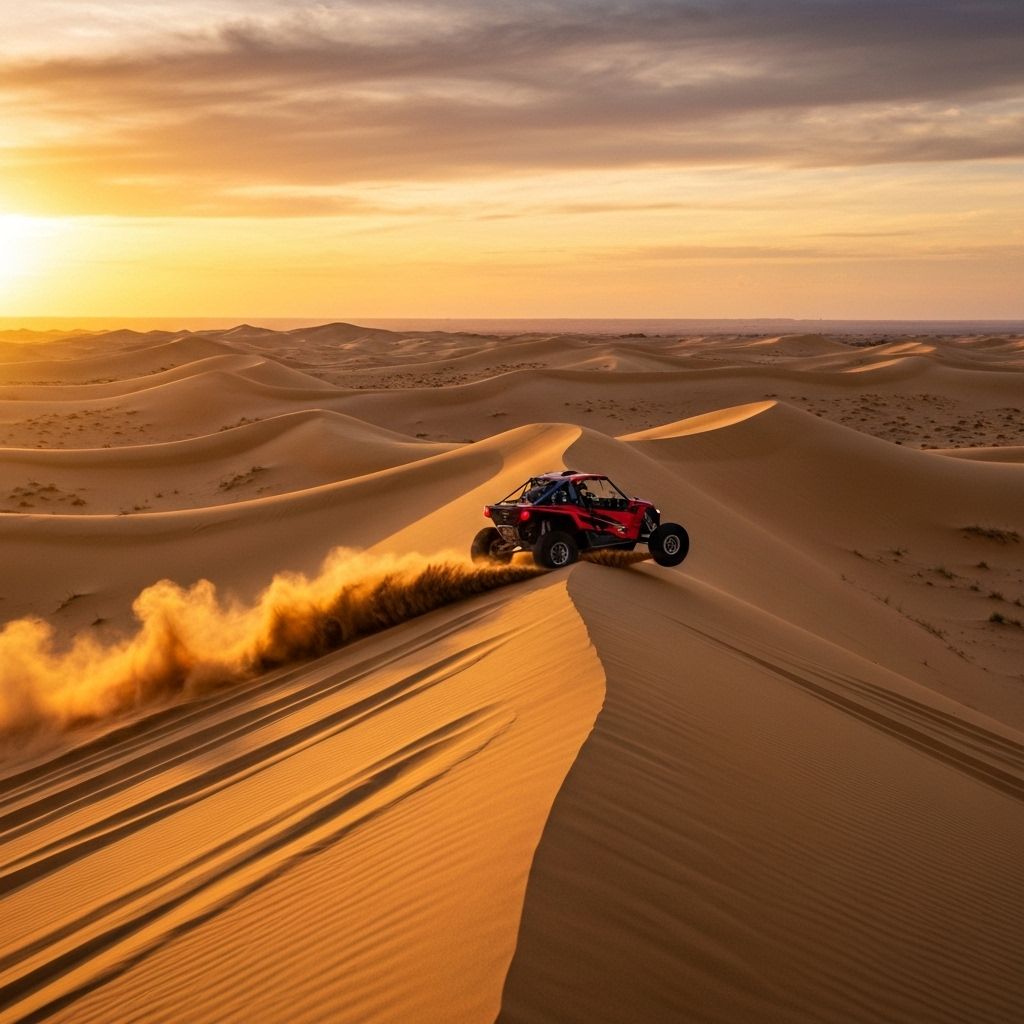
A custom dune buggy conquering the Glamis dunes – these vehicles require specialized insurance coverage
How Is It Different from Auto Insurance?
While both types of insurance share some common elements, several key differences set dune buggy insurance apart:
Usage Patterns
Dune buggy insurance accounts for seasonal use, storage periods, and recreational-only operation rather than daily commuting patterns that auto insurance considers.
Risk Factors
Off-road insurance considers terrain challenges, rollover risks, environmental exposure, and the absence of road safety features like traffic signals.
Valuation Methods
Custom-built vehicles require agreed-value policies where you and the insurer agree on the vehicle's worth upfront, unlike standard depreciation models.
Coverage Scope
Policies specifically cover modifications, aftermarket parts, and specialized equipment that standard auto policies exclude or severely limit.
Ready to Protect Your Dune Buggy?
Get a personalized quote in minutes. Our specialists understand off-road vehicles and can design coverage that fits your specific needs and budget.
Why You Need Dune Buggy Insurance
Some off-road enthusiasts view insurance as an unnecessary expense, especially if they're careful drivers or only ride occasionally. However, this perspective often changes dramatically after experiencing or witnessing an accident, theft, or significant damage. Let's explore the compelling reasons why dune buggy insurance isn't just recommended – it's essential.
1. Protect Your Financial Investment
Whether you spent $15,000 on a used sand rail or $80,000 building a custom dune buggy from the ground up, that's a significant chunk of money. Without insurance, a single accident or theft could wipe out that entire investment overnight.
Real-World Example
A Glamis regular named Mike spent three years and $45,000 building his dream sand rail. During his first trip to the dunes, another rider lost control and crashed into his parked vehicle, causing $22,000 in damage. The at-fault party had no insurance and no assets. Without his own comprehensive coverage, Mike would have been stuck with the entire repair bill.
His insurance premium? Just $680 per year. The claim paid out in full within 30 days.
2. Liability Protection Is Critical
Perhaps even more important than protecting your own vehicle is protecting yourself from liability if you cause damage or injury to others. Off-road accidents can result in:
- Serious injuries requiring expensive medical treatment
- Damage to other people's expensive custom vehicles
- Legal fees if you're sued for negligence
- Permanent disability claims that could reach millions of dollars
Without liability coverage, you're personally responsible for all these costs. A single serious accident could result in wage garnishment, asset seizure, and even bankruptcy. Liability insurance provides a legal defense and pays covered claims up to your policy limits.
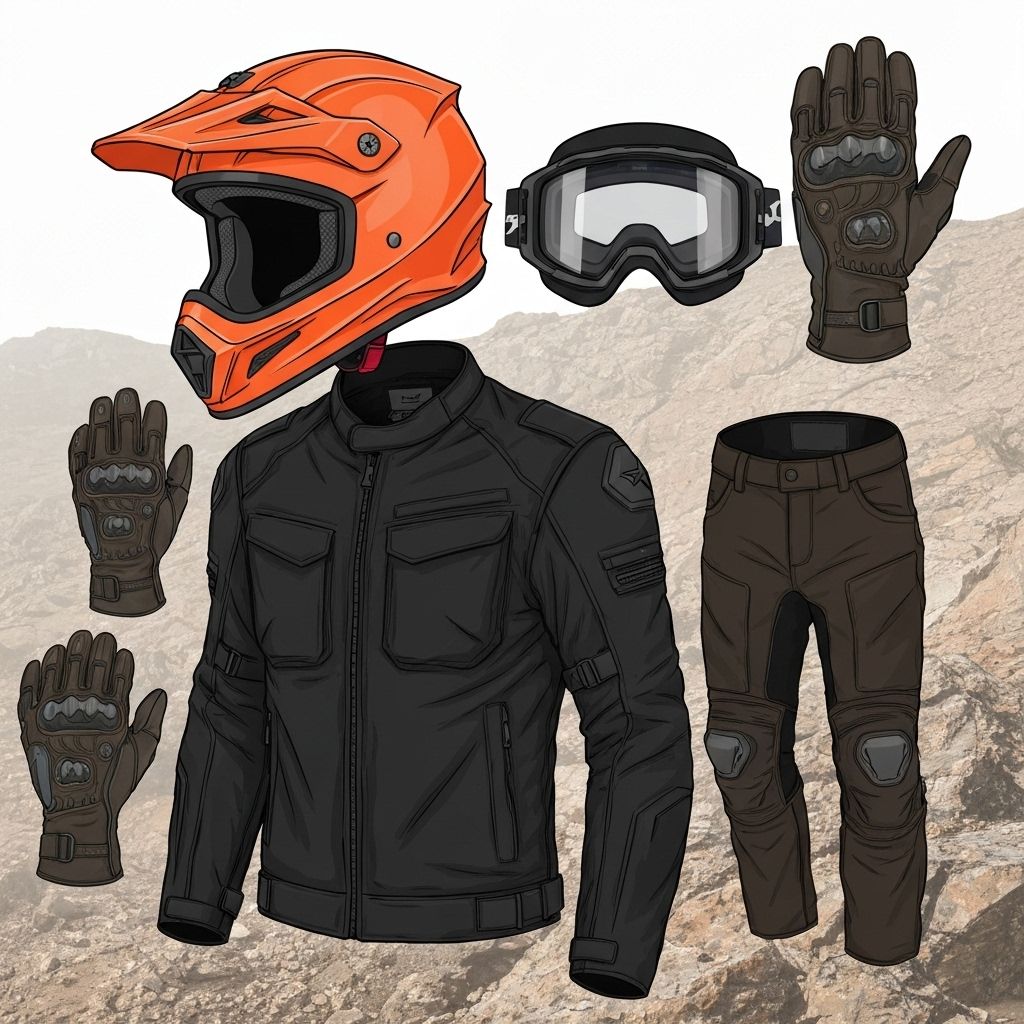
Proper safety equipment reduces risk, but insurance provides essential financial protection
3. Required by Many Riding Areas and Events
While insurance may not be legally mandated for off-road vehicles in many states, practical requirements often make it necessary:
Organized Events and Races
Most competitive events, rallies, and organized rides require proof of insurance before you can participate. This protects event organizers and other participants.
Rental Facilities and Tour Operators
If you're renting a dune buggy or joining guided tours, insurance is almost always mandatory and may be included in your rental fee.
Certain Public Land Permits
Some BLM (Bureau of Land Management) areas and state recreational areas may require insurance documentation for certain permit types or special use areas.
Lender Requirements
If you financed your dune buggy through a loan, your lender will require comprehensive and collision coverage until the loan is paid off.
4. Peace of Mind to Ride Confidently
Beyond the financial and legal reasons, insurance provides something invaluable: peace of mind. When you know you're properly covered, you can focus on enjoying your ride rather than worrying about "what if" scenarios. You can push your limits appropriately, explore new terrain, and fully experience the freedom that drew you to dune bugging in the first place.
This psychological benefit shouldn't be underestimated. The stress of riding uninsured – constantly worried about potential financial catastrophe – can diminish the entire experience. Insurance lets you ride with confidence, knowing that if something does happen, you're protected.
5. Coverage for Theft and Vandalism
Dune buggies are unfortunately attractive targets for thieves due to their high value and easily removable parts. Whether stored at home, in a storage facility, or left at a campsite while you grab dinner, your vehicle is vulnerable. Comprehensive coverage protects against:
- Complete vehicle theft
- Theft of expensive parts and accessories (engines, wheels, GPS units, etc.)
- Vandalism and malicious damage
- Damage from attempted theft
According to industry statistics, off-road vehicle theft has increased by approximately 15% over the past five years, with custom-built vehicles being particular targets due to their unique, valuable components.
Coverage Options Explained
Understanding the different types of coverage available is crucial to building a policy that truly protects you. Let's break down each coverage type, what it does, and who needs it.
Liability Coverage
This is the foundation of any insurance policy and often the only coverage required by law in areas where off-road insurance is mandatory. Liability coverage has two components:
Bodily Injury Liability
Pays for medical expenses, lost wages, pain and suffering, and legal fees when you're responsible for injuring someone else. This includes other riders, passengers in your vehicle, or even pedestrians.
Recommended minimum: $100,000 per person / $300,000 per accident. Many experts suggest $250,000/$500,000 for better protection.
Property Damage Liability
Covers damage you cause to other people's property – their vehicles, equipment, structures, or even environmental restoration costs if you damage protected land.
Recommended minimum: $50,000, though $100,000 provides better protection given the high value of many custom off-road vehicles.
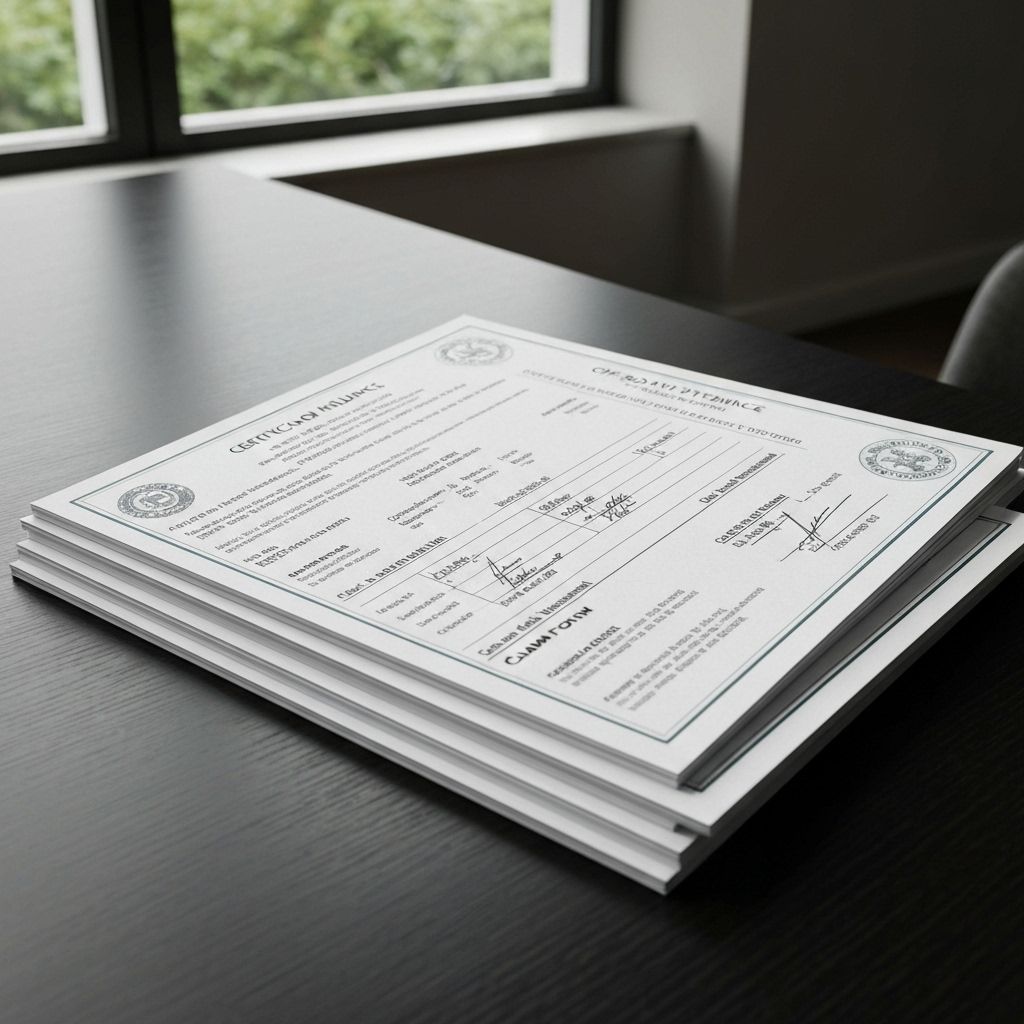
Understanding your policy documents ensures you have the right coverage for your needs
Collision Coverage
This coverage pays to repair or replace your dune buggy after an accident, regardless of who was at fault. It covers:
- Collisions with other vehicles or riders
- Hitting stationary objects (trees, rocks, posts)
- Rollovers and flips
- Damage from jumps and crashes
You'll pay a deductible (typically $250 to $2,500) before insurance covers the rest. Higher deductibles mean lower premiums, but make sure you can afford the deductible if you need to file a claim.
Who Needs Collision Coverage?
- • Anyone with a financed vehicle (usually required by lender)
- • Owners of expensive custom builds
- • Aggressive riders who push limits
- • Anyone who couldn't afford to replace their vehicle out-of-pocket
Comprehensive Coverage
Often called "other than collision" coverage, comprehensive insurance protects against non-accident damage and loss:
- Theft: Full vehicle or parts/accessories
- Vandalism: Intentional damage or graffiti
- Weather damage: Hail, flood, wind damage
- Fire: Both accidental fires and wildfires
- Falling objects: Tree branches, debris, etc.
- Animal damage: Hitting wildlife or damage from rodents
Like collision coverage, you'll choose a deductible. Comprehensive coverage typically costs less than collision since these events are generally less common than accidents.
Medical Payments Coverage (MedPay)
This coverage pays medical expenses for you and your passengers after an accident, regardless of fault. It covers emergency room visits, hospital stays, surgery, ambulance fees, and other medical costs up to your policy limit (typically $1,000 to $10,000).
MedPay is particularly valuable because it pays quickly without requiring you to prove fault first. This can be crucial for getting immediate medical care without worrying about payment.
Uninsured/Underinsured Motorist Coverage
Unfortunately, many off-road riders don't carry insurance. If an uninsured rider causes an accident that injures you or damages your vehicle, this coverage steps in to pay your costs. It includes:
Uninsured Motorist Bodily Injury
Covers medical bills, lost income, and pain and suffering when an uninsured rider injures you.
Uninsured Motorist Property Damage
Pays for vehicle damage when an uninsured at-fault party can't pay.
Underinsured Motorist Coverage
Covers the gap when the at-fault party has insurance, but their limits are too low to cover your damages fully.
Optional Add-On Coverages
Beyond standard coverages, consider these valuable add-ons:
Accessories and Custom Parts Coverage
Standard policies often have low limits ($1,000-$3,000) for aftermarket additions. This add-on provides higher limits to cover expensive upgrades like:
- • Performance engines and transmissions
- • Custom suspension systems
- • High-end GPS and communication equipment
- • Premium lighting and electrical systems
- • Custom paint and graphics
Agreed Value Coverage
For custom builds where determining actual cash value is difficult, you and the insurer agree on your vehicle's value upfront. If it's totaled, you receive the agreed amount without depreciation arguments.
Roadside Assistance and Towing
Covers the cost of recovery if you get stuck or break down in remote desert areas. Desert recovery can be expensive (often $500-$2,000), making this relatively cheap add-on valuable.
Trip Interruption Coverage
Reimburses lodging, meals, and rental vehicle costs if your dune buggy breaks down far from home during a trip.
Safety Equipment Coverage
Covers expensive safety gear like helmets, racing suits, harnesses, and communication systems if they're damaged or stolen with your vehicle.
How Much Does Dune Buggy Insurance Cost?
One of the first questions most people ask is: "What's this going to cost me?" The answer, as with most insurance, is "it depends." However, we can provide realistic ranges and explain what factors influence your premium.
Typical Cost Ranges
These ranges reflect actual market rates as of 2025, but your specific premium depends on numerous factors. Let's examine the most significant ones.
Vehicle Value and Type
Unsurprisingly, more expensive vehicles cost more to insure. But it's not just about the price tag:
- Purchase price or build cost: Higher values mean higher coverage limits and premiums
- Custom vs. manufactured: One-off custom builds may cost more to insure due to replacement difficulty
- Performance modifications: More powerful engines increase risk and premiums
- Safety features: Roll cages, harnesses, and GPS trackers may reduce costs
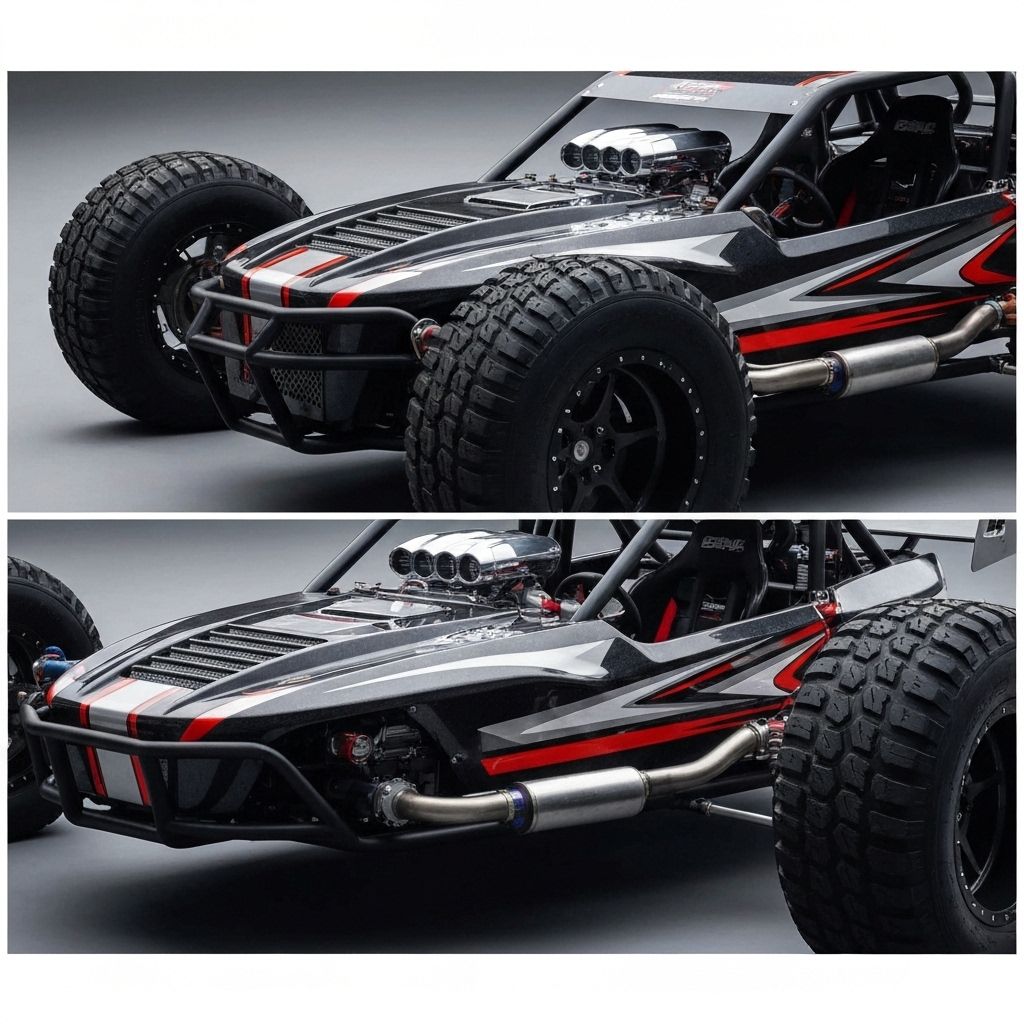
Custom modifications increase vehicle value and insurance costs, but proper coverage protects your investment
Usage Frequency and Purpose
How often and how you use your dune buggy significantly affects your premium:
Occasional Recreation (5-10 trips/year)
Weekend warriors who ride occasionally pay the lowest rates. Limited exposure means lower risk.
Regular Enthusiast (20+ trips/year)
Frequent riders pay moderate rates. While exposure increases, experience often reduces accident likelihood.
Commercial Use
Rental operations, tour guides, or business use require commercial policies with higher premiums due to increased liability exposure.
Racing and Competition
Most standard policies exclude racing. Competitive riders need specialized motorsports insurance at significantly higher costs.
Driver Experience and History
Just like auto insurance, your driving record matters. Insurers typically review:
- Years of off-road experience: More experienced riders often get better rates
- Claims history: Previous claims (even from other policies) increase premiums
- Traffic violations: DUIs, reckless driving citations affect off-road insurance too
- Age: Riders under 25 typically pay higher premiums; those over 50 may also see increases
- Safety certifications: Completing off-road safety courses can earn discounts (5-15%)
Location and Where You Ride
Geographic factors influence your premium in several ways:
- Home location: States with higher insurance costs generally see higher off-road premiums too
- Storage security: Locked garage vs. outdoor storage dramatically affects comprehensive coverage costs
- Theft rates in your area: High-theft regions pay more for comprehensive coverage
- Riding locations: Some premium areas (like Glamis) may have slightly higher rates due to crowding
- Distance to riding areas: Longer transport distances may slightly increase rates
Coverage Levels and Deductibles
Obviously, the coverage you choose directly impacts cost. You control these factors:
Smart Coverage Choices
- • Higher deductibles save money: Increasing from $250 to $1,000 can cut premiums 15-30%
- • Right-size liability limits: Match coverage to your assets to protect without overpaying
- • Skip what you don't need: Don't pay for roadside assistance if you have AAA
- • Bundle policies: Adding dune buggy insurance to existing policies often earns 10-25% discounts
Seasonal vs. Year-Round Coverage
Many riders only use their dune buggies during prime season (October through April in places like Glamis). Some insurers offer seasonal policies that significantly reduce costs – sometimes 30-40% compared to year-round coverage. However, ensure you have at least comprehensive coverage during storage to protect against theft and damage.
Real-World Example: Cost Breakdown
Sarah owns a $32,000 sand rail she built herself. She rides about 15 weekends per year at Glamis. Here's her annual premium:
That's just $80.75/month for comprehensive protection on a $32,000 custom build.
Legal Requirements by State
Insurance requirements for off-road vehicles vary significantly by state and even by specific use cases. Understanding these requirements helps you stay legal and avoid penalties.
Important Note
Laws change frequently. Always verify current requirements with your state's Department of Motor Vehicles or a licensed insurance professional before assuming you're compliant.
General Categories of Requirements
Private Property Use Only
If you only operate your dune buggy on private land (your property or private riding parks), most states don't legally require insurance. However, you're still personally liable for any damage or injuries you cause.
States in this category: Most states fall here for purely private-land use.
Public Land Recreation
When operating on public lands (BLM areas, state recreation areas, national forests), some states require proof of insurance or a bond. Requirements vary by state and sometimes by specific area.
Common requirement: Minimum liability coverage of $15,000/$30,000/$5,000 (bodily injury per person/per accident/property damage).
Street-Legal Off-Road Vehicles
If you've registered your dune buggy for street use (some states allow this with proper equipment), you absolutely must carry insurance meeting your state's minimum auto insurance requirements – typically higher than off-road minimums.
Requirements: Same as regular auto insurance in your state, often $25,000/$50,000/$25,000 or higher.
State-Specific Examples
Arizona
Not required for off-highway vehicle (OHV) use, but you must have a valid OHV decal. Insurance is strongly recommended and required for any street use. Glamis dunes span the California border, so consider both states' rules.
California
The Imperial Sand Dunes (Glamis) are in California. While insurance isn't legally required for off-highway use, most organized events and many group rides require it. Street-legal UTVs must be insured.
Nevada
Requires liability insurance or a $35,000 bond for all off-highway vehicles operated on public land, including popular areas like Dumont Dunes.
Utah
Requires insurance or a certificate of self-insurance for all OHVs used on public lands. Minimum coverage: $25,000 per person, $65,000 per accident for bodily injury, and $15,000 for property damage.
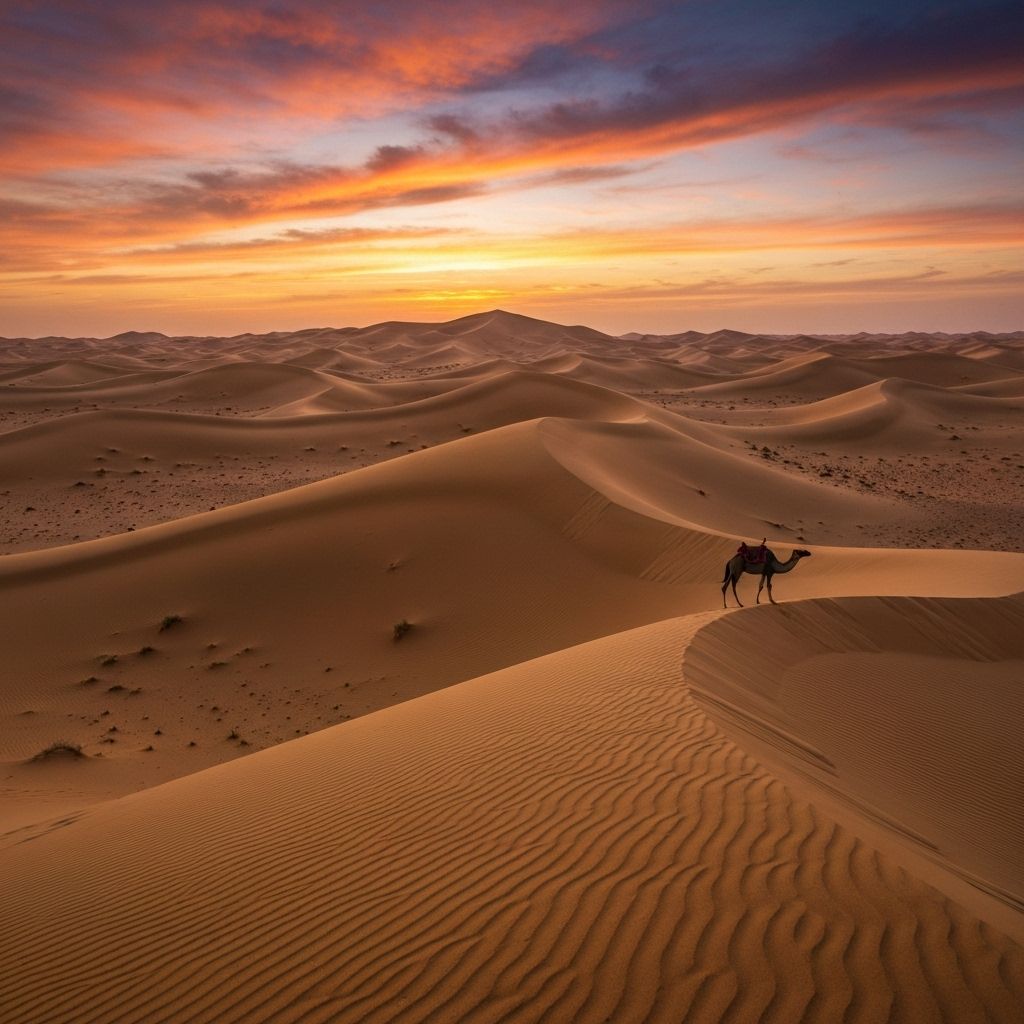
The Imperial Sand Dunes Recreation Area (Glamis) where insurance requirements and safety go hand-in-hand
Beyond State Law: Practical Requirements
Even if your state doesn't legally require insurance, you'll often need it for:
- Participating in sanctioned races or events
- Joining organized group rides or clubs
- Accessing certain premium riding areas or private parks
- Renting equipment or using guided tour services
- Meeting lender requirements if financing your vehicle
In many cases, these practical requirements mean you need insurance regardless of state law.
Questions About Coverage Requirements?
Our team knows the ins and outs of insurance requirements for every state and riding area. We'll make sure you're fully compliant and properly protected.
How to Get the Right Policy
Choosing the right insurance policy requires balancing adequate protection with reasonable cost. Here's a step-by-step approach to finding your ideal coverage.
Step 1: Assess Your Coverage Needs
Start by honestly evaluating your situation:
Calculate Your Vehicle's Value
Add up your original purchase price or build costs plus all modifications. This determines how much collision and comprehensive coverage you need.
Evaluate Your Personal Assets
Consider your home equity, savings, investments, and other assets. Your liability coverage should protect these assets in case you're sued.
Consider Your Riding Style
Aggressive riders who push limits need more comprehensive protection. Casual cruisers may get by with less.
Review Your Financial Safety Net
Could you afford to replace your dune buggy out-of-pocket if it were totaled? If not, comprehensive collision coverage is essential.
Step 2: Shop Multiple Insurers
Premiums can vary dramatically between insurance companies – sometimes by 30-50% for identical coverage. Always get quotes from at least 3-5 insurers before making a decision. Look for:
- Specialized recreational vehicle insurers (often offer better rates than general insurers)
- Companies with experience in your specific type of vehicle
- Insurers with good claims service reputations in the off-road community
- Options for bundling with your existing policies for discounts
Step 3: Document Your Vehicle Thoroughly
For custom builds and modified vehicles, proper documentation is crucial for getting appropriate coverage and ensuring smooth claims:
Documentation Checklist
- ✓ Detailed photos from all angles (exterior and interior)
- ✓ Receipts for all major parts and modifications
- ✓ Build sheet listing all components and specifications
- ✓ Professional appraisal for high-value customs
- ✓ VIN or serial numbers for all major components
- ✓ Videos of the vehicle running and demonstrating features
Store these documents digitally in the cloud and keep physical copies in a safe place separate from your vehicle. This documentation proves your vehicle's value and makes the claims process much smoother.
Step 4: Ask the Right Questions
When speaking with insurance agents, make sure to ask:
- What's specifically excluded from coverage?
- Are there geographic restrictions (some policies limit where you can ride)?
- How are claims handled for custom-built vehicles?
- What's the process for adding or updating modifications?
- Are there discounts for safety courses, storage, or multi-vehicle policies?
- What happens if I let someone else drive my dune buggy?
- Does coverage extend to borrowed or rented vehicles?
Step 5: Read the Policy Carefully
Before signing, actually read your policy documents – particularly the exclusions section. Common exclusions that surprise policyholders include:
- Racing and organized competition (requires separate motorsports insurance)
- Commercial use without commercial policy
- Damage from normal wear and tear or mechanical failure
- Injuries to family members in some cases
- Use outside specified geographic areas
Understanding these exclusions prevents unpleasant surprises when you need to file a claim.
Filing a Claim: What to Expect
Hopefully you'll never need to use your insurance, but if you do, knowing what to expect makes the process much less stressful. Here's how typical dune buggy insurance claims work.
Immediately After an Incident
Ensure Safety First
Check for injuries and get medical help if needed. Move to a safe location if possible, but don't leave the scene of an accident.
Document Everything
Take photos and videos of all damage, the accident scene, and any other vehicles involved. Get contact information from witnesses and other parties.
File a Report If Required
For accidents on public land or involving injuries, you may need to file a report with rangers or law enforcement. Keep a copy for your records.
Contact Your Insurer ASAP
Call your insurance company as soon as possible – ideally within 24 hours. Many policies require prompt reporting.
The Claims Process Timeline
Here's what typically happens once you've filed a claim:
Day 1-2: Initial Report
You'll speak with a claims adjuster who'll gather basic information about the incident. They'll assign a claim number and explain next steps.
Day 3-7: Investigation
The adjuster reviews your documentation, may contact witnesses, and determines coverage. For custom vehicles, they may request additional documentation of your build.
Day 5-14: Damage Assessment
Your vehicle will be inspected by an adjuster or authorized repair shop. For custom builds, this may take longer as they determine parts availability and costs.
Day 7-21: Settlement Offer
The insurer will make a settlement offer based on their assessment. You can negotiate if you disagree with their valuation.
Day 10-30: Resolution
Once you accept the settlement, payment is typically issued within 3-7 business days. Repairs can then begin or you receive your payout for total losses.
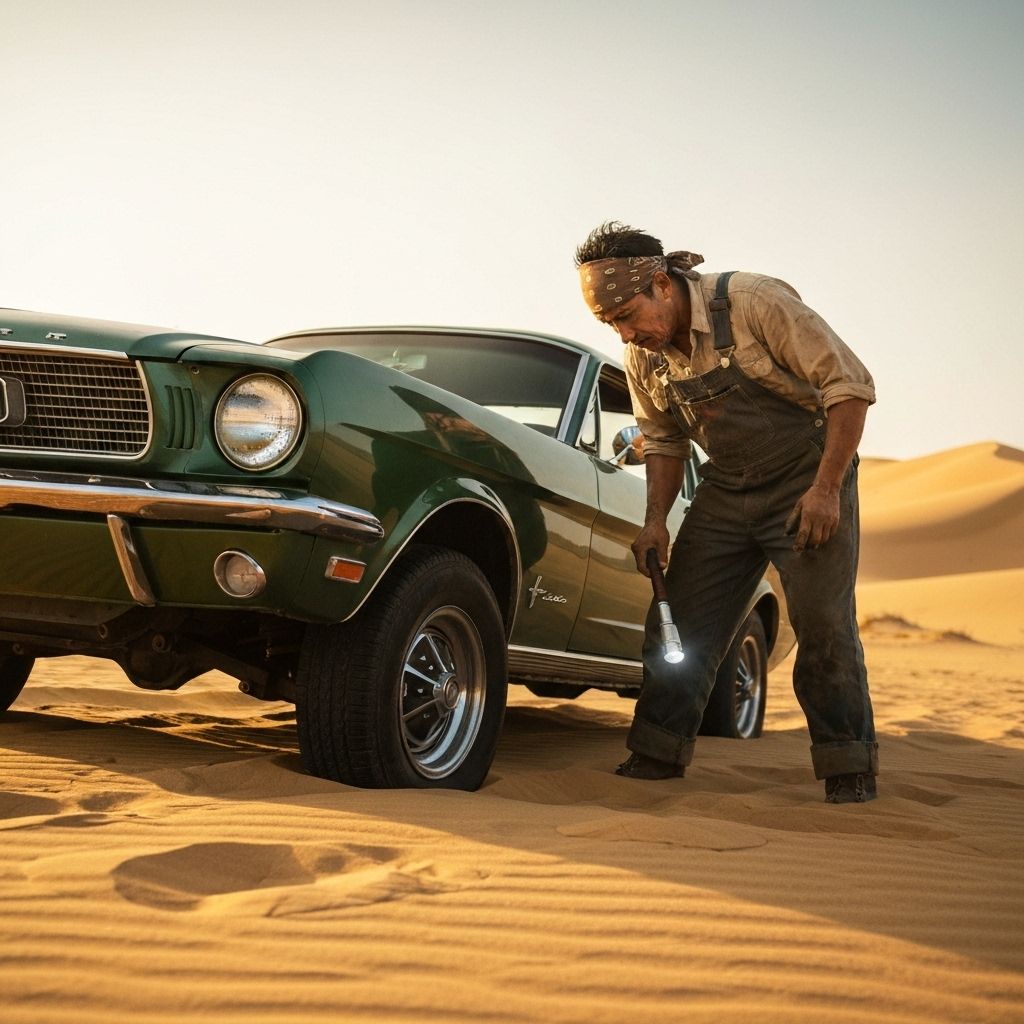
Recovery situations like this are why roadside assistance coverage can be invaluable
Tips for a Smooth Claims Experience
- Keep all communication with your insurer in writing when possible (email confirmations)
- Maintain a claims diary noting dates, times, and what was discussed
- Don't admit fault or sign anything without understanding it fully
- Get multiple repair estimates if you're not satisfied with the insurer's assessment
- Know your policy inside and out before filing a claim
- Consider whether small claims are worth filing (impacts your future premiums)
10 Tips to Save Money on Dune Buggy Insurance
Insurance is essential, but that doesn't mean you should overpay. Here are proven strategies to reduce your premiums without sacrificing necessary protection.
1. Bundle Your Policies
Adding dune buggy insurance to your existing auto, home, or other policies can save 10-25%. Ask about multi-vehicle discounts if you insure multiple off-road vehicles.
2. Increase Your Deductible
Raising your deductible from $250 to $1,000 can cut premiums by 15-30%. Just ensure you can afford the higher deductible if you need to file a claim.
3. Take Safety Courses
Many insurers offer 5-15% discounts for completing approved off-road safety courses. These courses also make you a better, safer rider.
4. Install Security Features
GPS tracking devices, kill switches, and alarm systems can reduce comprehensive coverage costs by 5-20%. Store your vehicle in a locked garage for additional savings.
5. Consider Seasonal Coverage
If you only ride 6-8 months per year, seasonal policies can save 30-40%. Keep comprehensive coverage during storage to protect against theft.
6. Pay Annually
Paying your full premium upfront instead of monthly installments often saves 5-10% and avoids monthly processing fees.
7. Maintain Good Credit
In most states, insurers use credit scores to determine rates. Improving your credit can significantly reduce premiums over time.
8. Avoid Small Claims
Filing claims increases future premiums. If damage is close to your deductible amount, consider paying out-of-pocket to keep your record claim-free.
9. Shop Around Regularly
Insurance rates change frequently. Get new quotes every 1-2 years to ensure you're still getting the best deal. Don't be afraid to switch if you find better rates.
10. Join Associations
Some off-road clubs and associations offer group insurance rates. Membership may pay for itself through insurance savings alone.
Frequently Asked Questions
How much does dune buggy insurance cost?
Dune buggy insurance typically costs between $300 to $1,200 annually, depending on vehicle value, coverage type, usage frequency, driver experience, and location. High-value custom builds with comprehensive coverage can exceed $2,000 per year. Modified vehicles and higher coverage limits increase premiums, while safety features and bundling policies can reduce costs.
Is dune buggy insurance required by law?
Requirements vary by state and usage. While not required for private property use in most states, insurance is mandatory for street-legal dune buggies in all states. Some states like Nevada and Utah require insurance for public land use. Additionally, many riding areas, events, and rental facilities require proof of insurance regardless of state law.
What does dune buggy insurance cover?
Coverage typically includes liability protection (bodily injury and property damage), collision coverage for accidents, comprehensive coverage for theft and weather damage, medical payments for injuries, and uninsured motorist protection. Optional add-ons include coverage for modifications and accessories, agreed value for custom builds, roadside assistance, and trip interruption coverage.
Can I use my auto insurance for a dune buggy?
No, standard auto insurance policies typically exclude off-road recreational vehicles. Coverage is designed for street use on public roads, not off-road recreation. You need specialized dune buggy insurance designed specifically for off-road use and the unique risks involved. Attempting to file a claim under regular auto insurance will likely result in denial.
Does insurance cover racing and competitions?
Most standard dune buggy insurance policies specifically exclude racing and organized competitions. If you participate in competitive events, you'll need specialized motorsports insurance with competition coverage add-ons. This type of policy is more expensive but provides protection during sanctioned racing activities. Always disclose competitive use to your insurer.
Will my insurance cover modifications?
Standard policies often have low limits ($1,000-$3,000) for aftermarket parts and modifications. If you've invested significantly in upgrades, you need accessories and custom parts coverage add-ons. Document all modifications with receipts and photos, and notify your insurer when adding expensive upgrades to ensure they're properly covered.
What if someone else drives my dune buggy?
Most policies follow the vehicle, meaning your insurance covers whoever is driving with your permission. However, coverage may be limited or excluded if the driver doesn't have a valid license, is under the influence, or uses the vehicle contrary to your policy terms. Always review your policy's "permissive use" clause and consider requiring friends to have their own coverage.
How do claims affect my premiums?
Filing a claim typically increases premiums at your next renewal, often by 20-40% for at-fault accidents. The increase usually lasts 3-5 years. Multiple claims can result in even higher increases or policy non-renewal. Consider whether small claims near your deductible amount are worth filing, as you might save money by paying out-of-pocket and maintaining your claim-free status.
Can I get coverage for a homemade dune buggy?
Yes, but you'll need to provide detailed documentation of your build including receipts, photos, and possibly a professional appraisal. Agreed value coverage works best for custom builds, where you and the insurer agree on the vehicle's worth upfront. This prevents disputes about value if you need to file a total loss claim. Some insurers specialize in custom vehicles and may offer better rates.
Do I need insurance if I only ride on private property?
While not legally required in most states for private property use, insurance is still highly recommended. You're personally liable for any injuries or damage you cause, even on private land. Additionally, you're not protected against theft, fire, or other damage to your own vehicle. The relatively low cost of insurance far outweighs the potential financial catastrophe of an uninsured loss.
Ready to Protect Your Off-Road Investment?
Don't risk losing everything you've invested in your dune buggy. Get a free, no-obligation quote from our specialists who understand off-road vehicles and the unique coverage you need.
Free Quotes
No cost, no obligation, no pressure – just honest advice
Off-Road Specialists
We understand dune buggies, not just insurance
Fast Coverage
Get covered in as little as 24 hours
Glamis Insurance / Contractors Choice Agency
12220 E Riggs Rd, Chandler, AZ 85249
📧 josh@contractorschoiceagency.com
About This Guide
This comprehensive guide was created by the insurance specialists at Glamis Insurance, part of Contractors Choice Agency. We've been helping off-road enthusiasts protect their investments for over a decade, with specialized expertise in dune buggy insurance, sand rail coverage, and recreational vehicle protection.
Our team includes active off-roaders who understand the sport from personal experience, not just insurance manuals. We know what matters to you because we're riders too. When you call us, you're talking to people who've been to Glamis, who understand the thrill of desert riding, and who are committed to protecting your ability to keep enjoying it.
Last updated: January 15, 2025 • Insurance information accurate as of publication date but subject to change. Always verify coverage details with a licensed insurance professional.